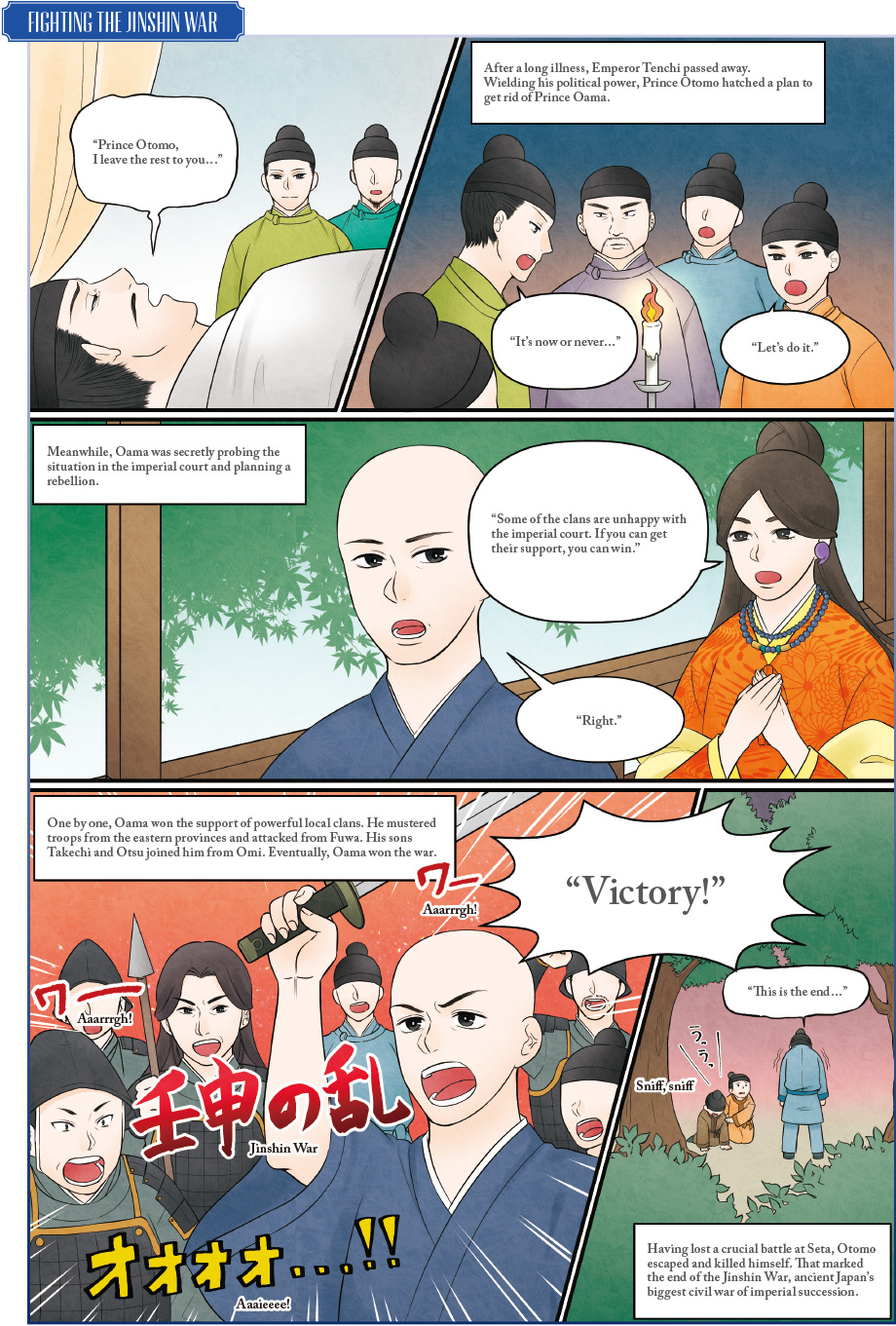Ancient Japan’s biggest war of imperial succession. The family bond brought victory to Prince Oama.
The Jinshin War
After Emperor Tenchi’s death, Prince Otomo was left holding power. But he felt threatened by the more charismatic Prince Oama. These fears turned out to be well founded. While secluded in Yoshino, Oama had been secretly planning to seize the imperial throne. Eight months after moving there, Oama learned that the imperial court was gathering arms and planning to close off Yoshino. Oama raised an army in response. Sarara had some perceptive advice for Oama: “Prince Otomo is carrying on Emperor Tenchi’s high-handed policies. Many of the local clans are unhappy with the court. If you can get them on your side, you’ll win.” Oama won the support of the powerful clans of Ise, Mino, and Owari. He also closed off two strategic routes, through Suzuka and Fuwa (later called Sekigahara, the location of the Battle of Sekigahara in 1600). These strategies brought victory to Oama and led to Otomo’s eventual suicide. According to an account of the Jinshin War in the Nihon Shoki (“Chronicles of Japan”), Sarara was closely involved in the battle strategies.
Prince Oama’s remarkable sons
Apart from Prince Kusakabe, who was Sarara’s only child, Prince Oama had nine other sons. The eldest of them, Prince Takechi, was a talented military leader. During the Jinshin War, he was general commander at the battle in Fuwa. Later, he joined his father in Kuwana, and together they led their troops to victory. Prince Otsu was Princess Ota’s son and Kusakabe’s half-brother. Otsu had a noble demeanor, excelled with both the sword and the pen, and was Emperor Tenchi’s favorite grandson. Another of Oama’s sons was Prince Osakabe. Later in life, he would help compile the Taiho Code—Japan’s first set of official penal and administrative laws. These outstanding sons were a source of pride for Oama. But their various talents put Kusakabe in the shade. In a bid to prevent future tensions between his sons, Oama made six of them sign the Yoshino Pact.

